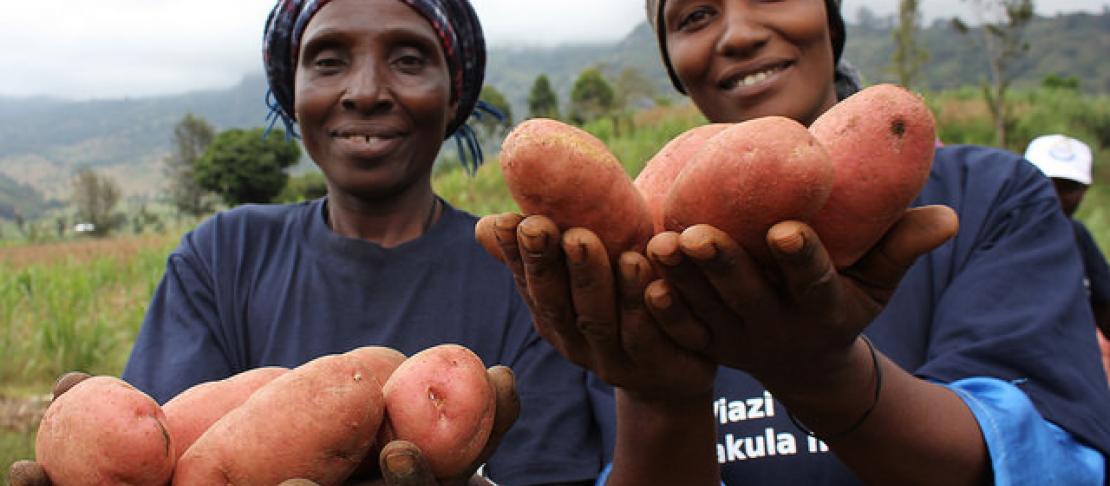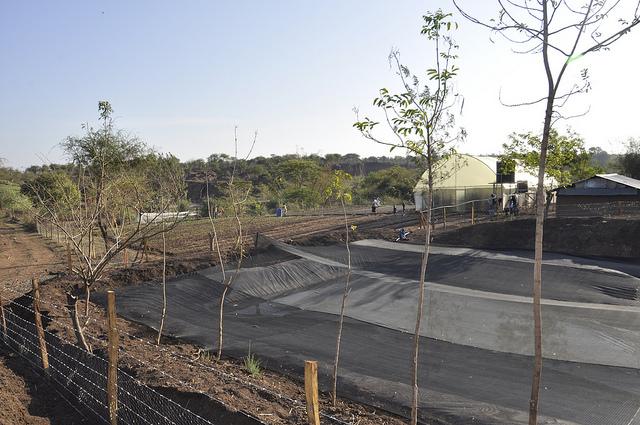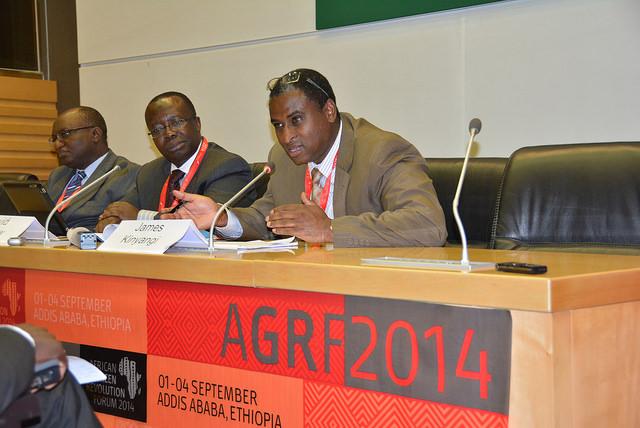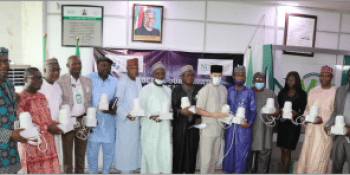Climate-smart agriculture: Solution to Africa’s warmer climate?

New report by AGRA finds opportunities in adoption of climate-smart agriculture innovations by farmers as the climate shifts.
On the eve of next week's United Nations Climate Summit in New York, the idea of climate-smart agriculture is gaining momentum. And for good reason. The Africa Agriculture Status Report (AASR) 2014, released earlier in September, points to a growing risk of failed seasons amongst farmers occasioned by a warmer climate. It notes, however, the situation is not all gloom-and-doom, as there are opportunities for innovation through adoption of appropriate climate-smart agriculture (CSA) practices and policies that can help smallholder farmers sustain and improve their livelihoods.
Drawing on the expertise of a number of professionals, among them the CGIAR Research Program on Climate Change, Agriculture and Food Security (CCAFS) researchers, the report highlights areas where investments in African agriculture have the potential to be most productive. This will help African agricultural policy makers and stakeholders select appropriate CSA practices and policies for food secure households.
CSA is conceived as a suite of technologies and practices that can increase productivity and incomes, enhance adaptation and build resilience to climate change, and where possible reduce GHG emissions. CCAFS together with partners and farmers are already testing some of these technologies and practices in several Climate-Smart Villages (CSVs). Located in regions considered climate change “hotspots” in East Africa, West Africa and South Asia, CSVs are learning sites where CSA technologies are assessed for local suitability and implemented by farmers with the help of researchers, policy makers and other partners.
According to the AASR 2014, some of the most important climate-smart investments include: new crop varieties that are drought tolerant and resist emerging and existing pests and diseases. In East Africa, CCAFS is working with other CGIAR centers to ensure farmers adopt these new varieties.
Learn more: Improving potato varieties for farmers in the Usambara Highlands
Learn more: Testing sorghum and cowpea varieties to increase farmers’ production margins in East Africa

a water pan in one of the smart farms in nyando, western kenya. photo: v. atakos (ccafs)
Improved water management is the second climate smart investment recommended in the AASR; Over 90% of African agriculture is rain fed. Local level water management such as dams, micro catchments and small scale irrigation offer key opportunities for adaptation as water supplies dwindle and rain becomes more erratic.
Learn how farmers in the CSVs are dealing with this challenge through water pans and drip irrigation: Grand greenhouse plans keep youths farming for a better future.
Under soil management, the focus is on farming practices that improve soil fertility, including ability to retain and use water. Such practices include agroforestry where rows of fertilizer trees are grown together with alleys of maize, sorghum and other crops to stabilize and enrich the soil.
Watch Video: Agroforestry in Kenya is supporting both climate adaptation and mitigation
To improve soil moisture retention and reduce erosion, farmers are also engaged in contour farming and terracing, composting and conservation agriculture. Practices such as crop rotation and diversification are also common and are aimed to keep the soil healthy.
Read more: Empowering a local community to address climate risks and food insecurity in Lower Nyando, Kenya
Climate information services for farmers
Climate information services is identified as a useful initiative that is rapidly gaining momentum in sub Saharan Africa. The aim is to bring weather information to farmers in a format that is understandable and useful for them in making timely farm-level decisions. Combined with other climate-smart interventions such as rainwater harvesting, agroforestry, and livelihoods diversification, climate information services can help farmers cope with the negative impacts of climate variability and change, and take advantage of good conditions by confidently investing in their fields. In Senegal, agricultural extension is cooperating with national meteorological services, farmers’ organizations and NGOs to support farmers with climate information services. Partnerships with community radio have expanded the reach of weather and climate forecasts to almost 2 million users.
Learn more: Putting climate services into farmers’ hands

dr. james kinyangi, ccafs east africa program leader during launch of the aasr 2014. more photos are here. photo: s. kilungu
Gender and climate-smart agriculture
The role of gender in the adoption of climate-smart agricultural practices by farmers is also considered. Women’s rights to property vary within and between countries in sub Saharan Africa. Land tenure systems and availability of funds to invest in better technologies are gender-sensitive constraints faced by women to the adoption of conservation and climate-smart agriculture. Because of their different social roles, women and men both experience and respond to climate extremes and climate change differently, including through access to development programs. In one example, women and men in Kaffrine, Senegal were found to access climate information through different channels, due to differences in their labor roles and participation in social networks.
Through understanding how climate change will impact men and women differently, programs and policies promoting adaptation to climate variability and change can be designed to ensure that impacts are addressed in gender-equitable ways.
Learn more: New analysis suggests gender differences in how farmers adapt to climate-smart agriculture
Conclusion
Although climate change affects the various aspects of food security (food availability, access, utilization and stability) in complex ways, a lot can still be done to cushion farmers. Adoption of climate-smart agriculture by smallholder farmers who produce most of Africa’s food will go a long way in ensuring food security.
Download the report:
This blog story was written by Vivian Atakos (Communications Specialist - CCAFS East Africa) and Alexa Jay ( Program and Communications Officer - CCAFS theme on Climate Risk Management).
Visit the CCAFS East Africa page and follow @cgiarclimate_EA on twitter for more information on work in the region. Learn more about CCAFS work on Climate Risk Management.



